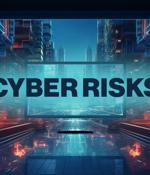Security News

In this Help Net Security interview, Sanaz Yashar, CEO at Zafran, discusses the role of threat exposure management (TEM) in modern cybersecurity strategies. As traditional vulnerability management...

Onboarding new employees is an important time for any organization but comes with a unique set of security risks. Learn more from Specops Software about these risks and how to mitigate them. [...]

Researchers found that 73% of CISOs expressed concern over cybersecurity becoming unwieldy, requiring risk-laden tradeoffs, compared to only 58% of both CIOs and CTOs. 73% of CISOs feel more pressure to implement AI strategies versus just 58% of CIOs and CTOs.

While some may associate cyber risks primarily with technology and data breaches, they can also lead to brand or reputational harm, reduced productivity, and financial losses. This Help Net Security round-up presents excerpts from previously recorded videos featuring security experts covering a spectrum of cyber risk trends, ranging from threats to large language models and supply chains to social engineering tactics and the proliferation of celebrity audio deepfakes.

How to empower CISOs and mitigate cyber security risks in a rapidly evolving threat landscape Sponsored Post Defending against the cyber threats of today isn't dissimilar to protecting a medieval...

SEC's new cybersecurity risk management, strategy, governance, and incident disclosure rules, which require increased transparency around cybersecurity incidents, have been in effect since December 18, 2023. For businesses that already harbor concerns over their cybersecurity protections, visibility, and incident response preparedness, meeting the SEC's new incident reporting rules can be a serious challenge.

In this Help Net Security interview, Yoav Nathaniel, CEO at Silk Security, discusses the evolution of cyber risk management strategies and practices, uncovering common mistakes and highlighting key components for successful risk resolution. We hope to find the 'golden' indicator for which risk will eventually lead to a breach, but until that day, security teams need to holistically incorporate several layers of risk factors to determine business risk and drive justifiable communications.

As AI tools become more widespread, impersonation and deception have become easier. Organizations are combating this issue with policies and technological solutions.

Webinar In the natural world, there are ten different kinds of cloud - a rare simplicity in meteorological terms. Multi-cloud environments in particular spawn a lot of complexity, and their continuous evolution can also create cyber security blind spots.

Despite advanced security protocols, many cybersecurity incidents are still caused by employee actions. In this Help Net Security video, John Scott, Lead Cybersecurity Researcher at CultureAI, discusses how integrating AI and automation into your cybersecurity strategy can improve employee behaviors and reduce security incidents.